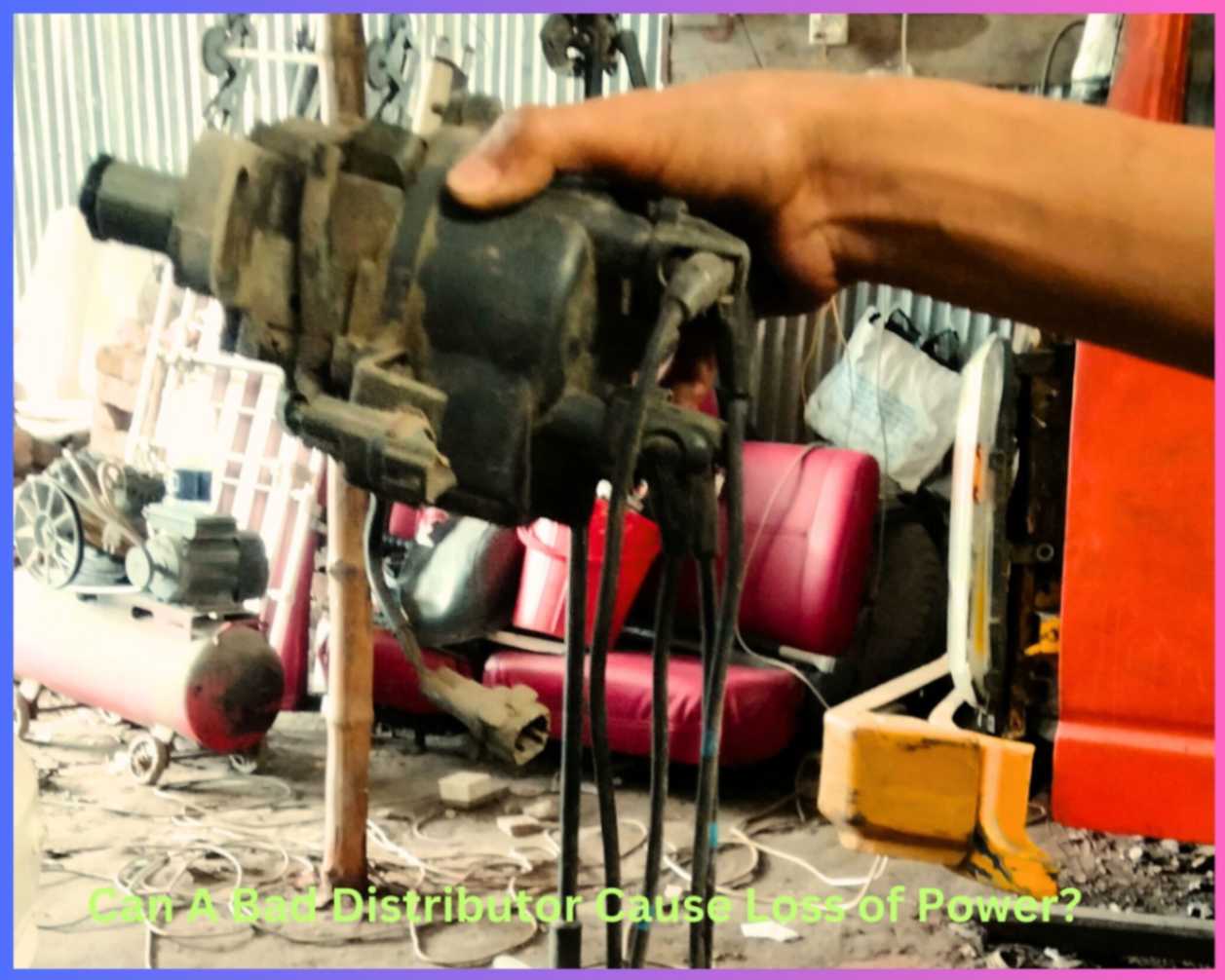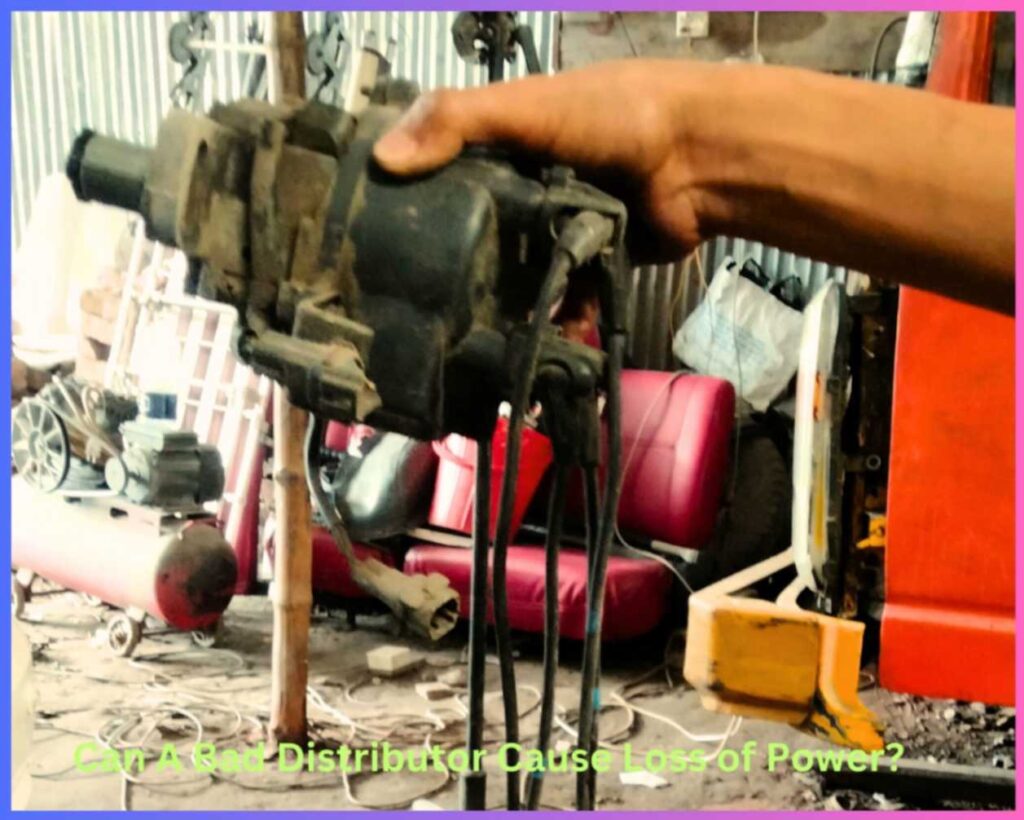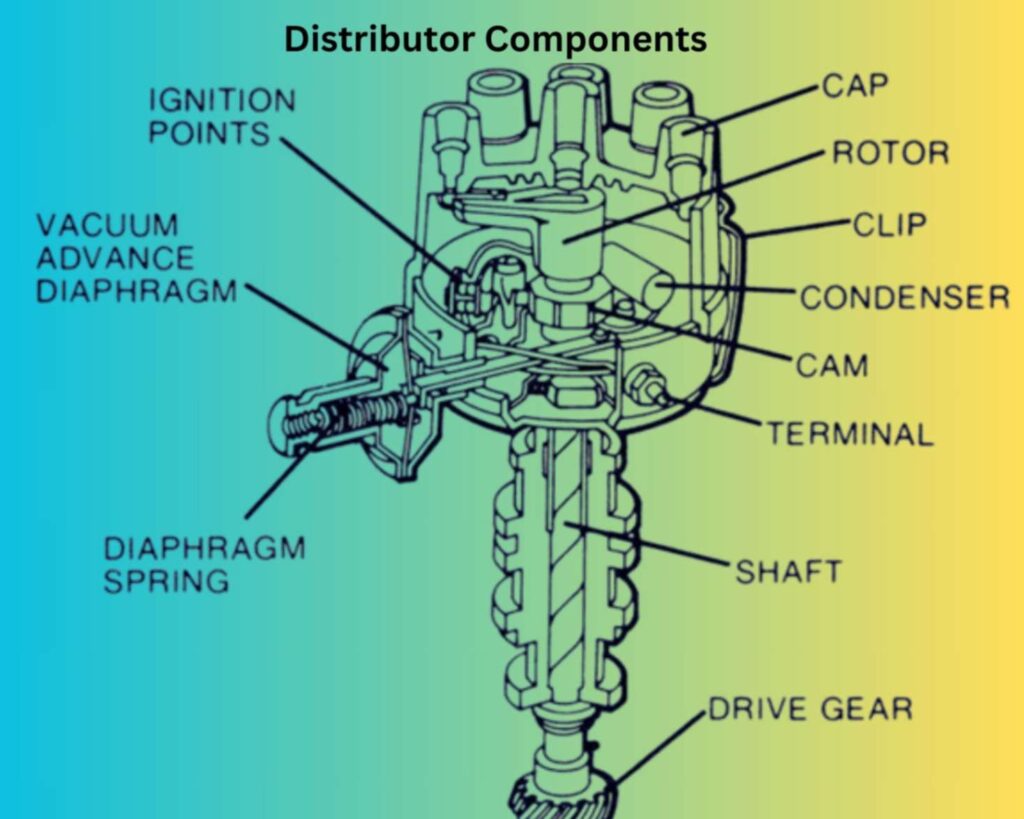Phone:
(701)814-6992
Physical address:
6296 Donnelly Plaza
Ratkeville, Bahamas.


Can a Bad Distributor Cause Loss of Power? This is a question many car owners, mechanics, and drivers face when dealing with engine performance issues. A faulty distributor can cause significant power loss, leading to rough idling, stalling, or even engine misfires.
Imagine driving on the highway, and suddenly your car loses power. You press the gas, but nothing happens. It’s frustrating, right? This situation is often caused by a failing distributor, and many people struggle to identify this issue before it worsens.
In this article, we’ll explore how a bad distributor can cause power loss, the signs to look out for, and the steps to take. By understanding the role of the distributor, you can avoid costly repairs and ensure your engine performs at its best.
A car distributor is a crucial component of the ignition system. It distributes high-voltage electricity from the ignition coil to the spark plugs, ensuring that each cylinder receives power at the correct time for combustion. The distributor is made up of various parts such as the rotor, cap, and ignition wires. Its main purpose is to synchronize engine timing, allowing for smooth performance.
The distributor plays a vital role in the ignition system by coordinating the timing of electric pulses. It works by receiving power from the ignition coil and passing it to the spark plugs. When the rotor spins, it makes contact with different points in the cap, allowing electricity to “jump” and reach the spark plug. This action ignites the air-fuel mixture inside the engine cylinders, enabling combustion.

If your car struggles to start in rainy or foggy weather, your distributor might be failing. Engine stalling, vibrations, and squealing sounds are also common.
Ignoring these signs can lead to engine failure or expensive repairs.
Solution:
A damaged distributor can cause engine misfires, hard starts, and overheating of the catalytic converter.
Leaving this unchecked can result in poor engine performance and costly repairs.
Solution:
The distributor controls ignition timing by managing when the spark plugs fire, ensuring they ignite the air-fuel mixture at the right moment. It uses a centrifugal advance mechanism that adjusts timing as engine speed increases, making the spark occur earlier. Additionally, many systems feature a vacuum advance, which further fine-tunes the timing during light loads and deceleration.
Incorrect ignition timing can lead to several problems that affect engine performance. Timing that’s too advanced or too retarded can result in engine knocking, reduced power, and poor fuel economy. Other issues include overheating and rough idle, which decrease overall efficiency.
A faulty distributor can be a major cause of engine misfires. When the distributor isn’t delivering enough power to the spark plugs, the engine starts to misfire, feeling like it’s stumbling or jerking. This misfire is often due to incomplete combustion in one or more cylinders. As the distributor wears down, misfires can occur across all cylinders, reducing engine efficiency.
Problem:
The power isn’t reaching the spark plugs properly.
Effect:
Engine hesitates, stumbles, and misfires.
Solution:
Engine misfires can severely impact your car’s performance. Misfiring happens when parts like spark plugs or fuel injectors fail to function correctly, causing a significant power loss. The engine starts hesitating, and overall performance decreases. If unresolved, it can lead to more serious engine damage.
Problem:
Misfire due to faulty parts, like spark plugs or injectors.
Effect:
The engine hesitates and loses power, risking further damage.
Solution:
A failing distributor can drastically reduce your car’s power. The distributor controls the ignition timing, and when it fails, the timing becomes irregular. This results in poor combustion, causing engine misfires and loss of power. Additionally, a bad distributor leads to poor fuel economy and can even cause your engine to stall.
Key symptoms of a failing distributor:
If you notice any of these symptoms, act quickly to avoid further damage.
In older cars, the distributor plays a crucial role in managing engine performance. A faulty distributor can cause various problems, including poor starting, misfiring, and, ultimately, power loss. Unlike modern cars with solid-state ignition systems, distributors in older models need regular checks and maintenance.
How to diagnose distributor issues:
Addressing distributor issues early prevents expensive repairs and keeps your engine running smoothly.
A major sign of a worn-out distributor cap is stalling or backfiring while driving. This happens when the faulty rotor prevents the proper flow of electricity to the spark plugs, causing the engine to misfire.

A broken distributor shaft is often caused by a seized oil pump. When the oil pump seizes, it stops the shaft from rotating, leading to engine issues.
A faulty distributor can quickly lead to increased fuel consumption due to engine misfiring. When the ignition timing is off, the engine burns fuel inefficiently, reducing mileage. This issue often causes the engine to struggle, wasting fuel and lowering performance.
A faulty distributor module can cause significant power loss and hurt your vehicle’s fuel economy. When the ignition system misfires or fails, the engine loses power and struggles to perform at full capacity, leading to inefficient fuel usage. Symptoms like stalling, rough idling, and poor acceleration are common with this problem.
One of the most reliable ways to check your distributor is by performing a visual inspection. Start by removing the distributor cap and looking for any visible issues like cracks, small holes, or corrosion on the terminals.
These signs can indicate wear or damage that could affect your vehicle’s performance.
Testing for faults in the distributor is critical to identify potential issues. Remove the distributor cap and crank the engine to check for a spark when the points open. If there’s no spark, block the points open and check for power. If you have power, the points may be shorted to the ground, although this is rare.
A bad distributor can severely harm your spark plugs and wires. Carbon buildup inside the distributor can conduct electricity and disrupt performance. This can lead to misfires, coil voltage issues, and a faulty connection inside the distributor cap.
A faulty distributor often burns out ignition coils due to voltage overload. If the coil receives too much voltage, it can get damaged, leading to engine issues. Faulty spark plugs or wires can also trigger this problem.
If your car starts running rough or struggles to start before reaching 15,000 miles, it’s time to inspect the distributor. Although the distributor housing can last for decades, components like the cap, rotor, and points typically need replacing every 15,000 miles. Look for signs like difficulty starting, especially in cold weather, or a shaky ride, which may indicate distributor issues.
Actionable Steps:
Replacing a distributor is a straightforward process that requires basic tools. Begin by pulling the spark plug wires and removing the distributor cap. Once the hold-down clamp is removed, slide out the distributor, ensuring it’s properly aligned with the timing marks. Installation follows the reverse process, except for the critical step of setting the timing.
Steps to Follow:
The cost of replacing a distributor assembly can range between $462 and $718, depending on the car make and model. Factors like labor rates and the complexity of the vehicle can affect this price.
Yes, if you’re confident in your skills, DIY replacement can save you money. However, distributor replacement involves engine timing, so professional help may be safer.
Prevent costly repairs with regular distributor maintenance! The distributor cap and rotor can collect dirt and corrosion over time, but they don’t need immediate replacement. Instead, keep them clean to ensure a smooth ignition.
Don’t wait for a total breakdown—spot the signs of distributor failure early! Difficulty starting in rainy or foggy conditions is a major red flag. You might also notice the engine vibrating or stalling.
When the ignition system falters, so does your engine’s performance. Power issues often stem from faulty spark plugs, ignition coils, or a worn ignition control module. Regular maintenance of these components can prevent misfires and ensure smooth acceleration.
A weak fuel system can significantly reduce engine power. Clogged fuel filters and faulty fuel pumps restrict fuel flow, leading to poor performance. Keeping these components in check ensures your engine gets the fuel it needs to function optimally.
To wrap up-
Yes, a bad distributor can cause a significant loss of power in your vehicle. When the distributor fails, it disrupts the engine’s ability to fire properly, leading to poor performance, misfires, and stalling. Addressing these issues promptly is essential to avoid further damage and expensive repairs. If you’re noticing symptoms like a sluggish engine, unresponsive gas pedal, or power loss, it’s time to inspect or replace the distributor for smooth engine performance.
Yes, a bad distributor can cause loss of power. It can disrupt the spark timing, leading to poor combustion and reduced engine performance.
Symptoms include engine misfires, difficulty starting, loss of power, rough idling, and backfiring. These are signs that the distributor is not working properly.
A bad distributor affects the ignition system. It causes misfires and improper timing, which leads to a loss of engine power and efficiency.
If the distributor is not providing the correct spark timing, the engine struggles to accelerate. This can result in sluggish performance or hesitation when you press the gas pedal.
Yes, a failing distributor can cause the engine to stall, especially when the timing is off, or the rotor and cap are damaged.
If ignored, a bad distributor can lead to more serious engine issues, such as engine misfires, power loss, or even failure to start.
You may notice difficulty starting the car, loss of power, unusual engine sounds, or misfires. A mechanic can diagnose this with a simple test.
Yes, replacing a faulty distributor usually restores power and resolves related engine performance problems.
It’s a good idea to check your distributor during regular maintenance or if you notice any performance issues like misfires or power loss.
Driving with a bad distributor is risky as it can cause further engine damage and lead to unpredictable power loss or stalling.